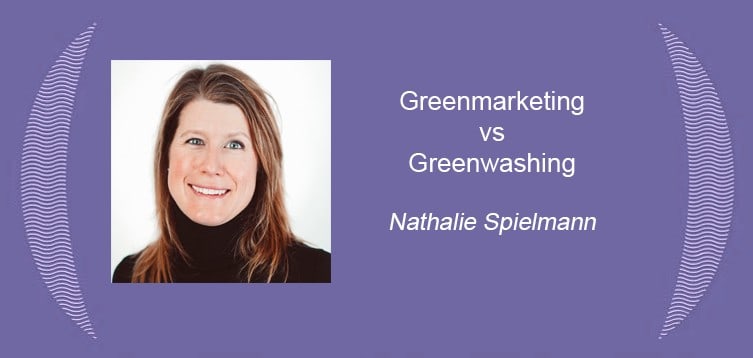Green marketing versus Greenwashing: it’s a fine line!
Published on 08/24/2021
Thematics :
Green marketing versus Greenwashing: it’s a fine line!
Published on 08/24/2021
At a time when “less is better,” how can marketers adopt a green attitude? By Nathalie Spielmann, Professor of Marketing Department at NEOMA Business School. Published in French in the Monde des Grande Ecoles.
Consuming less, opting for renewable energy sources, eating organic foods, recycling… Every day consumers are presented with recommendations so they can become more responsible in their lifestyle and purchases. This makes green positioning particularly attractive to marketers. However, despite companies making large-scale developments in environmental friendly initiatives, the green market is still difficult to break into and the different approaches do not always head in the right direction.
Today, research has shown that 70% of consumers want to consume more responsibly and 66% are willing to pay more for green products. In fact, the products are perceived as being more virtuous, which justifies the desire to pay more for these products (Green is the New White: How Virtue Motivates Green Product Purchase). Nevertheless, before positioning themselves on the market, marketers need to be wary because another portion of consumers—about 52%—think that it is up to the companies themselves to be more eco-friendly first. Unfortunately, a new study conducted by the European Commission and consumer rights associations has shown that 40% of so-called ecological or green claims about products are misleading or not backed up by any proof!
This is referred to as greenwashing and as the study showed, this practice is currently far too widespread on the market. But how do you spot greenwashing? It’s not always easy! For example, a brand can claim to its consumers that its product is “natural,” but it will make an unclear statement in this claim (there is no legislation that regulates the use of the term.) For example, juice with natural banana flavouring is not necessarily made with real bananas. The flavour can come from the root or bark of an obscure tree, which while natural, is not from real banana. What is even worse is that in order to reproduce a flavour resembling banana, a great deal of chemical changes are necessary, and as a consequence, the so-called natural product often becomes more artificial than pure. Consumers think that they are buying something natural, but in the end they are buying something completely different. Other examples of greenwashing include using colours that give the customer the impression that the product is ecological (e.g.: the use of the colour green to imply organic ingredients or materials), refraining from providing all the information to customers about the product’s production methods (e.g.: talking about sustainable agriculture without giving details about the applied processes) and advocating an ethical approach in the advertising material while the company does the opposite (e.g.: in 2018, H&M established an ethical wage policy for the employees in their factories in Asia while studies show that to this day the policy has not been in force.)
With this being the case, how can marketers approach the green market for its benefits without actually being viewed as dishonest? While the simplest response would be to communicate with consumers honestly and shift towards green production methods, each company should first go through a period of self-assessment. Before jumping into the green market, companies must first wonder if they can really keep a green promise or not. There is a big difference between the desire to ride a market trend and having the real abilities to do so, and there is nothing worse in the eyes of consumers than a company that doesn’t keep its promises.
It is important to remember that consumption is how consumers express their identity; they consume products that best represent themselves. A company’s products are an extension of the consumer’s self-concept. Thus, the relationship that exists between the consumer and the company must remain authentic in order to continue. No consumer wants to be associated with a dishonest brand. A company needs to avoid disappointing its current and potential customers through inconsistent messaging and practices. In fact, sometimes “less is better” involves not expanding your product line so as not to run the risk of appearing disingenuous to your consumers. Less is better means staying faithful to your ethos and bringing to market what your company does best. Afterwards, if the company chooses to shift towards sustainable development, organic products or recycling, it can then openly promote these attributes and employ green marketing rather than greenwashing.

